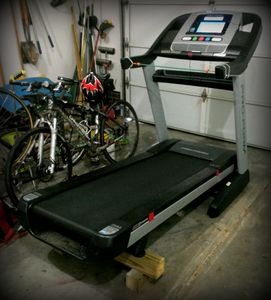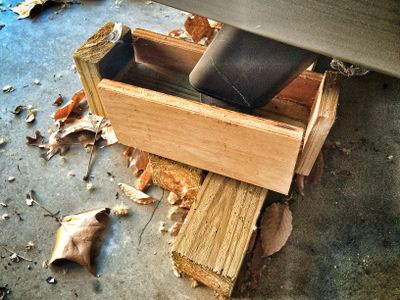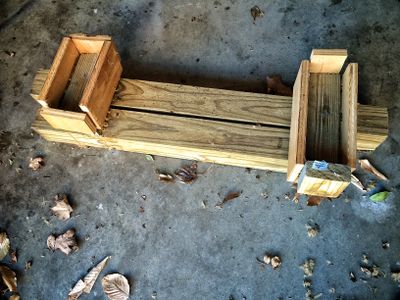Treadmill Descent
From Fellrnr.com, Running tips
Downhill Running creates more DOMS than running on the flat, and a key benefit to DOMS is that it changes the structure of the muscles so they are protected against future damage. When you run a hilly course or perform Downhill Intervals your legs will significantly recover on the uphill sections. The answer is to run on a Treadmill that will provide a continual descent. I use the ProForm Pro 2000 with the back lifted on blocks for my Treadmill Descents, which is remarkably effective. Here are some tips on performing Treadmill Descents:
- Few treadmills will provide a descent without propping up the back. My ProForm Pro 2000 does offer limited descent options, but the maximum pace is too restricted to be useful. I've not found a treadmill that offers a descent with a good running speed for a reasonable price.
- You will need to have a good Treadmill with a strong motor, as you'll be putting a lot of stress on it. The Pro 2000 has survived many long descent runs, but I weigh less than 140 pounds/70 Kg.
- I removed the cover from the motor of my Treadmill to improve cooling as the descents will stress the motor and control board. (You'll probably violate the warranty on your treadmill by propping up the back.)
- I've found that descent angle makes a bigger impact than you'd expect and the difficulty is non-linear. For instance, I've found that going from -12 to -14 degrees produces a radical increase in difficulty.
- A Treadmill Descent is quite easy aerobically, with a lower Heart Rate due to the decreased energy use. This can make it tricky to judge the difficulty, as the perceived effort can be quite low until the muscle damage is significant.
- Start off with a gentle descent and shorter distances. The Treadmill Descent may seem easy at the time, but the soreness will appear a day or too later. I'd start off with -2 to -4 degrees and 3-5 miles.
- If you're confident the descent has not produced DOMS (no weakness or soreness) you could try again with a higher dose (more mileage or steeper decent) every other day.
- Once you're getting DOMS from the descent, perform the Treadmill Descent every 1-2 weeks depending on your recovery time.
- Overdosing on the descent can leave your legs trashed for several weeks, so be cautious.
- Avoid a treadmill descent during a Taper.
1 Measuring the Descent Angle
There are various approaches to measuring the descent angle.
- The best option is to use a Digital Angle Meter (Error: Could not parse data from Amazon!) to measure the actual angle.
- You can try a smartphone app, which should give you a reasonable estimate of the descent angle. I found Clinometer works reasonably well, and the compass app that's built into iOS will provide a simple angle meter.
- You can do some simple math by measuring the distance between the front and back supports of your treadmill. If you want a 10% decline, you'd need to prop up the back by 10% of the length of the treadmill. So if your treadmill is 54 inches long, you'd need to prop it up by 5.4 inches to get 10%. However, you need to check the floor is flat; my garage has a 2% slope on it!



